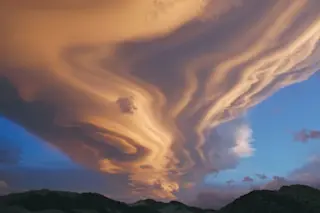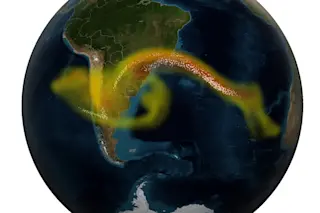1 When moist, warm air rises to a cooler elevation, water condenses onto microscopic “seeds” like dust, ash, or bacteria. Water + seeds + updraft = clouds.
2 If there’s more water vapor than places for it to condense, already-formed ice crystals can also serve as seeds. As the crystals take on moisture, they may become too heavy for updrafts to support. Time for the umbrella.
3 It makes sense, then, that adding seeds to thin clouds should make them rain out. Believing the theory, 37,000 Chinese peasants shot rockets filled with silver iodide (a widely used seeding agent) into clouds.
4 So much for People Power. After reviewing 40 years of cloud-seeding efforts in an area north of Israel, researchers at Tel Aviv University have concluded that seeding doesn’t actually produce additional precipitation (pdf).
5 Super-seeding: A team led by Stephen Salter of the University of Edinburgh has proposed ...














